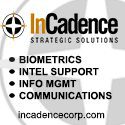
IPV6 is here. Now what?
That’s a question Larry Prior, who got his start tracking technology trends as an intelligence officer with the U.S. Marine Corps and later, as a staff member on the House Permanent Select Committee on Intelligence, tackles every day in his role as president and chief executive officer at CSRA Inc.
Think of IPV6’s previous incarnation, with its looming ceiling on IP addresses, as the size of a golf ball. IPV6, by contrast, “is going to be the size of the sun,” says Prior, quoting one of his favorite anecdotes from a paper prepared by the Chief Executive Officers of The Internet Corporation for Assigned Names and Numbers (ICANN). So with IPV6’s seemingly endless address space, where is the Internet of Things headed? And where does government fall into the mix?
“There are a lot of smart people in government thinking about IPV6,” says Prior. “Some of your better data analysis comes from ‘islands of excellence’ within government — I think you’ll see them apply the Internet of Things more broadly.” On the flip side, driving the progress will be the consumer side. “We are on yet another revolution focused on enterprise,” adds Prior, “and this one is absolutely driven by mobile consumers.”
Check out Prior’s predictions for where IPV6 is headed in both the public and private sectors — where it fits into the ever-widening Internet of Things (IoT), and how it leads to a digital government where data analysis reigns supreme and connectivity shines brighter each day.
1. Healthcare will lead the way in IoT innovation. In both the private and government sectors, healthcare will be a critical driver for innovation with IPV6 and the IoT as a whole. “Healthcare is going to become more affordable, and there’s room to do better with metrics based on little changes in behavior,” says Prior.
“For example,” he says, “count the number of friends you have wearing Fitbits and the new Apple Watch. You’re going to see industries and new businesses get creative with processing power, bandwidth and IPV6 to allow them to sense things that are important — and allow that data to be analyzed in a way consumers find useful.”
2. Online privacy concerns won’t go away. “Whether tracking a terrorist or understanding a consumer’s buying patterns, the IoT, with big data analytics, can establish a ‘pattern of life,’” says Prior, “where you can understand the routine and preferences of an individual, predict where a terrorist will be at some future time, or create the perfect buying experience for a consumer as they enter the market or interact with a platform.”
“I am all for using sensors, devices and data for competitive advantage,” Prior states. “However, there’s a cautionary note in the midst of the IoT’s increasing push toward technological progress.
“Facebook and Yahoo! advertisements,” Prior notes, “are driven through a profound understanding of a consumer’s buying patterns. These organizations are experts at this and have extensive knowledge about how consumers interact with their platforms. The IoT will only lead to exponential expansion of how this data is used and, for this reason, will continue to test online privacy concerns well into the future.”
3. There will be fascinating new ways for government agencies and the public to engage. We’ve already seen NOAA, NGA, and several other federal agencies make data available through the data.gov initiative for the betterment of society. “IoT is about securely connecting everything to everyone to improve the quality of people’s lives,” says Prior.
“The future will see analytic mash-ups across a proliferation of government sensors and privately collected sensor data — via mobile devices we carry or privately owned sensors – that will be used for better, real-time decision making at the point of need. These decisions may range from choosing the optimal mode of transport, to navigating our daily commute to work, to providing more timely health analytics to our military vets.”
4. Commercial consumers will force government to pick up the technological pace. It’s true government has historically been slow to adopt change. “The movement to cloud and hybrid clouds in the government has been slower than in commercial markets,” says Prior. By contrast with IoT, government will have to confront a world with an increasing array of smart sensors and devices that will become a critical part of their digital enterprise – a digital government.
“The addresses are expanding exponentially, the sensors and the very small and efficient processors are everywhere, and they are being used and driven by commercial consumers,” says Prior. “The government will need to pick up the pace, collaborate with industry, and quickly find ways to secure these devices from cyber-attacks or tampering. The world is not waiting and the government cannot afford to lag behind.”
Whatever the outcome, the next iteration of the Internet of Things, and IPV6 within it, will most certainly take a cue from Moore’s Law – with the number of transistors in an integrated circuit, continuing to grow exponentially, continuing to drive a data-rich world — as big as the sun.
Related: WashingtonExec’s Inaugural Top 30 Execs to Watch List Spotlight: Larry Prior, CSRA


